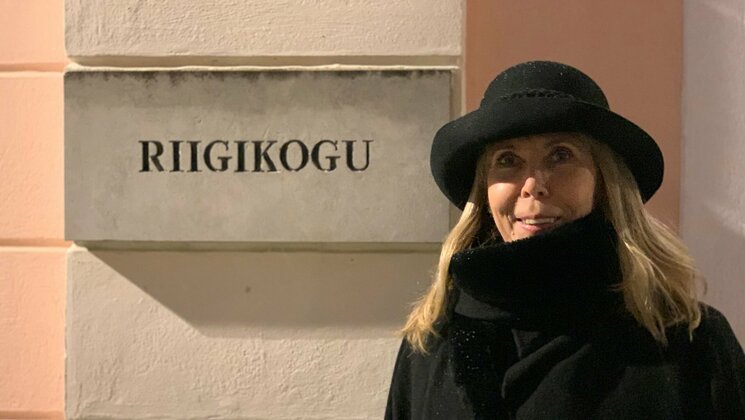Berkeley-Tartu biosemiootika suveseminar III Terrence Deacon (University of California, Berkeley) 15.07 - "The bridge from information theory to semiosis"
Terrence Deacon esineb Tartus 15. juunil kell 12.15, Jakobi (Jakobi 2-336) loenguga "Informatsioonist semioosini". See on viimane osa Berkeley–Tartu biosemiootika suveseminarist (eelmised toimusid Jeremy Shermaniga 26. juunil ja Yogi Hendliniga 11. juulil).
Terrence Deacon on antropoloogia ja neuroteaduse professor (University of California, Berkeley).Tema tuntuimad teosed on "The Symbolic Species: The Co-evolution of Language and the Brain" (1997) ja "Incomplete nature: How Mind Emerged from Matter" (2010).
Berkley-Tartu suveseminar:
Osa I: 26. juuni, koos Jeremy Shermaniga,
Osa II: 11. juuli, Yogi Hendliniga,
Osa III: 15. juuli, koos Terrence Deaconiga.
Terrence Deacon: "The bridge from information theory to semiosis"
Over the past century the term ‘information’ has become a mass noun referring to the quantifiable statistical properties of what we collect, transmit, store, and manipulate via our various analytical and communicative media. In non-technical contexts, however, the term ‘information’ retains three related denotations used in different contexts: referring to the medium (signal, channel, sign vehicle), its reference (meaning, representational content, aboutness), or its normativity (use-value, significance). Because referential and normative properties are non-intrinsic and interpretation-dependent they are typically excluded from scientific analyses or else operationally reduced to quantifiable relationships between extensive properties (as in the case of mutual information). Semiotic theories explicitly address the problem of interpretation and offer tools for qualitatively analyzing these non-intrinsic properties. Specifically, semiotic theory attempts to analyze different forms of referential and interpretive relationships and to determine how these forms depend upon and develop from one another. To date there is no accepted bridge linking these theoretical perspectives. Until this is developed both will remain fundamentally incomplete tools that provide a misleading fractionated picture of living, mental, and social processes.
Terrence Deacon is a professor in anthropology and neuroscience at the University of California, Berkeley. His books include "The Symbolic Species: The Co-evolution of Language and the Brain" (1997) and "Incomplete nature: How Mind Emerged from Matter" (2010). (See also https://anthropology.berkeley.edu/terrence-w-deacon.)
After a lunch break, the meeting will continue at 4 p.m. with a seminar.
We also expect to discuss some new ideas from the recent Gathering in Biosemiotics that took place in Moscow.
Yogi Hendlin: Multi-level semiosis – and the impact of supernormal stimuli in the human superorganism and holobiont
Abstract. This talk draws on classic ethology and insights for humans as superorganisms living in artificial environments. It first describes the case for seeing the human body, and not just cultures, as itself a superorganism, but through the unconventional form of defining superorganism not as cells or individuals only of one species, but as inherently an interspecies phenomenon. Second, I describe how the holobiont view of the human organism helps make sense of this definition of the superorganism as interspecies. Finally, I’ll look at both classical and cognitive ethology to examine how even individuated human cells or other endosemiotic symbionts can also become affected by unfamiliar stimuli stronger than those their evolutionarily-geared heuristics are geared for. This overflow or flood of response to certain stimuli I see as a relevant form of supernormal stimuli, as Niko Tinbergen described this condition, even as I extend it to endosymbionts, beyond Tinbergen’s use of the concept specifically on the individual animal.
Jeremy Sherman: The Semiotic Origins of Mattering / Olu semiootilised lätted
Jeremy Sherman received his doctorate with biosemiotician Terrence Deacon and has studied and collaborated closely with Deacon for 22 years, these days in 1.5 hour, one-on-one conversations three times a week. Sherman is the author of Neither Ghost Nor Machine: The emergence and nature of selves (Columbia University Press, 2017), an attempt to make the full range of Deacon's ideas more accessible and intuitive to a wider audience. Biosemiotics research is a second career for Sherman. His first career was in social science, social marketing and political advocacy. He founded a national lobbying organization addressing nuclear weapons and the climate crisis. He brings to his biosemiotics work dedicated attention to its implications in the social sciences and continued interest in social marketing – how to convey the biosemiotic approach to as wide an audience as possible. He describes his work as "cradle to grave," from life's cradle at the origin of life to our current grave situation. Like Deacon, he works to detail the emergence of semiotics from chemistry and the evolution of language (as in Deacon's book, the Symbolic Species) – the radical differences to life's adaptive processes that result from humans adapting under the influence of symbolic competence. He believes that the life and social sciences are currently operating at a disadvantage in not having a scientific explanation for the emergence of the fundamental attributes assumed within these fields. Function (use, value, for-ness) fittedness (reference, representation, about-ness) and effort (the struggle for existence, striving, trying, by-ness) – all three unique to organisms are inescapable in the life/social sciences and impermissible in the physical sciences. Until we have a physical science explanation for how these traits emerge, the life/social sciences are too much like alchemy – researchers seeking value without understanding the core phenomena they're manipulating. For example, social scientists attempting to detail how motivations play out, with only a black-box, impressionistic understanding of what motivations are. With Deacon's explanatory hypothesis for how these attributes emerge with agency, selfhood, organisms, Sherman revisits and reinterprets living dynamics, in particular within the social sciences. To this end, Sherman has written over 1,000 blog articles that receive over 25k page-views a week. The articles are written all under the influence of Deacon's explanation for the emergence of biosemiotics.




